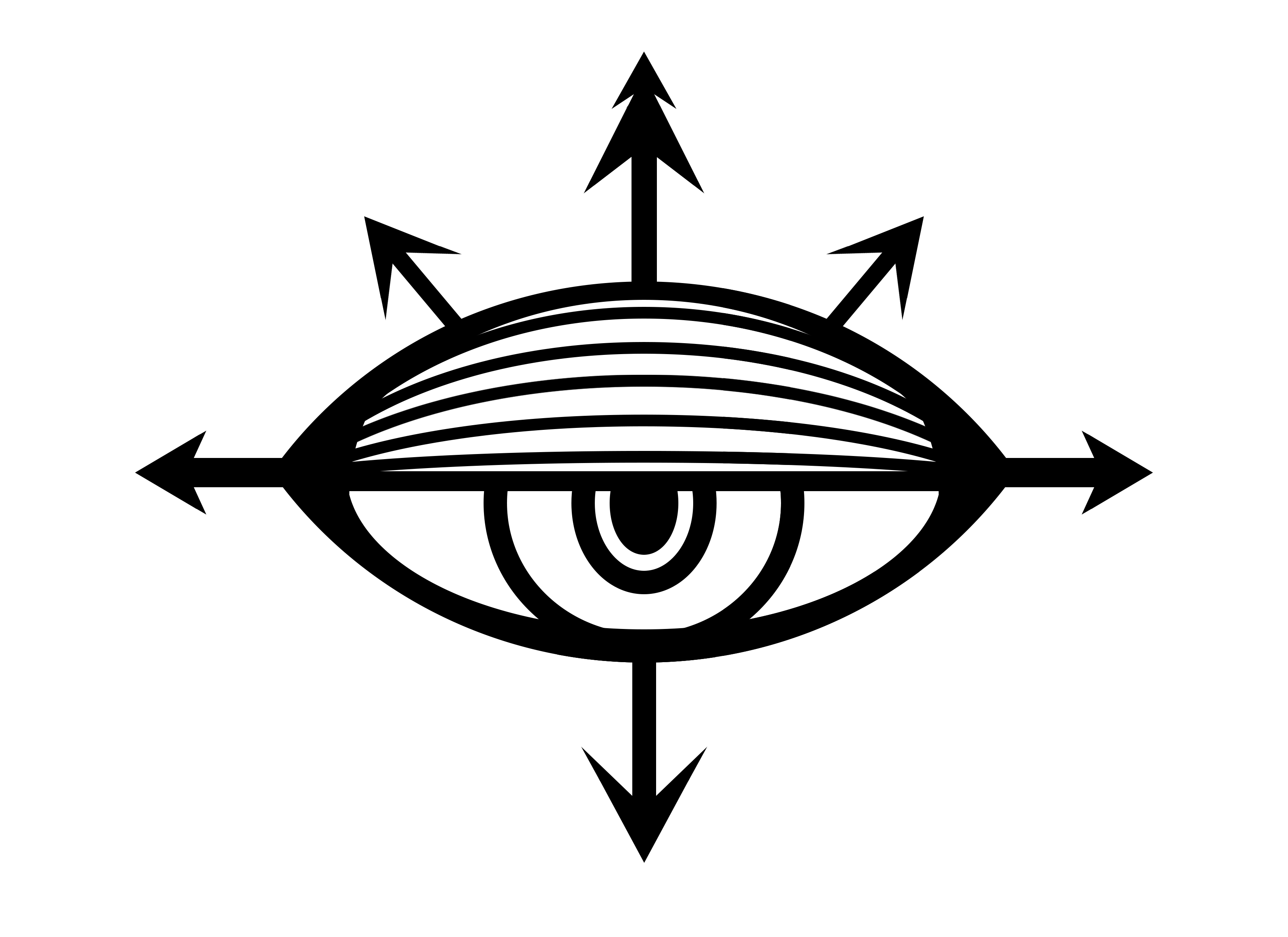User:APMK/Lore: Paracausal Monitoring Division: Difference between revisions
| Line 7: | Line 7: | ||
=History= | =History= | ||
During the Phoron War, NanoTrasen faced a wide array of threats beyond the comparatively mundane assaults of [[Lore: The Syndicate|the Syndicate]] as early as the 2490s. Although at the time many of these events were considered to be misinformation, misinterpretation, or incidents of mass hysteria amidst rising tensions on the frontier, some Central Command branches elected to form small investigative units to track and follow up on such accounts. As these units operated on short notice and in isolation, very few were able to produce any useful insights at the time. Although these early attempts were far from successful, the meager infrastructure first developed by them would eventually inspire the PMD’s modern structure and procedure. | During the Phoron War, NanoTrasen faced a wide array of threats beyond the comparatively mundane assaults of [[Lore: The Syndicate|the Syndicate]], going back at least as early as the 2490s. Although at the time many of these events were considered to be misinformation, misinterpretation, or incidents of mass hysteria amidst rising tensions on the frontier, some Central Command branches elected to form small investigative units to track and follow up on such accounts. As these units operated on short notice and in isolation, very few were able to produce any useful insights at the time. Although these early attempts were far from successful, the meager infrastructure first developed by them would eventually inspire the PMD’s modern structure and procedure. | ||
=Modern Day= | =Modern Day= | ||
Revision as of 02:47, 17 February 2025
Introduction
Many Eyes, One Vision.
The Paracausal Monitoring Division (PMD) is the most recent addition to NanoTrasen's Emergency Response structure. While some of its roots reach as far back as the Phoron War, this department was formally established in 2564 to investigate unexplained phenomena and the so-called "Galactic Awakening". Serving as Central Command’s paranormal equivalent of an Emergency Response Team, the PMD operates across a broad array of fields - from Xenoarchaeology to Incident Response. Despite the recent beginning to it's operations, the PMD has already made a name for itself in more unstable areas of the Frontier, as some of it's most notable deployments to NanoTrasen facilities have been heralded by significant catastrophes.
History
During the Phoron War, NanoTrasen faced a wide array of threats beyond the comparatively mundane assaults of the Syndicate, going back at least as early as the 2490s. Although at the time many of these events were considered to be misinformation, misinterpretation, or incidents of mass hysteria amidst rising tensions on the frontier, some Central Command branches elected to form small investigative units to track and follow up on such accounts. As these units operated on short notice and in isolation, very few were able to produce any useful insights at the time. Although these early attempts were far from successful, the meager infrastructure first developed by them would eventually inspire the PMD’s modern structure and procedure.
Modern Day
The early 2560s were marked by a subtle, yet undeniable increase to odd and unexplained phenomena across the frontier. Due to the expansive nature of NanoTrasen's holdings, Central Command recognized earlier than most the rising number of reports as they began to come in, in some cases requiring activations of Emergency Response Teams to handle unexpected situations. In light of this nascent trend, NanoTrasen sought to establish a branch of operations capable of not only providing adequate responses to such events - but also investigate the financial opportunity that might be seized through exploitation of these new phenomena.
Utilizing the barebones infrastructure of their mothballed investigatory units, Central Command began screening their extant ERT and DDO assets for any skillset, knowledge or ability relevant to the investigation of so-called "Paracausal" occurrences. These employees were recruited into the PMD as the first Paracausal Anomaly Response Agents and Analysts. These brave agents continue to undergo rigorous training and study to ensure that the PMD, and by extension NanoTrasen, have the most up to date knowledge of paracausal phenomena possible.
Although the PMD's methods and equipment suggest some measure of progress has been made on their stated goals of learning and exploitation, the highly classified nature of nearly all PMD operations makes it difficult to gauge it's true extent. Whilst some employees believe they will be responsible for the "next Phoron" one day, others point to NanoTrasen's seeming lack of investment in expanding the PMD's barebones staffing and coverage as proof of their stagnation.
Due to PARA being encountered largely during emergencies, many NanoTrasen employees are under the misguided impression that they exist as a paramilitary force. In reality the PMD functions as a scientific initiative, with much of it's funding going to R&D: especially the containment and study of paracausal items. PARA response teams are just as likely to retrieve an anomalous item as they are to encounter hostile paracausal entities.
Structure
The PMD functions as a subdivision of Central Command, operating under the same umbrella as the ST-ERT. Considering their dual role as a research initiative, it can be safely assumed that the PMD operates with a certain degree of autonomy in regards to how they conduct their heavily classified research. As with ST-ERT teams, Central Command branches are meant to possess a dedicated PMD team in their assigned area of operations. These teams are generally meant to be based out of a local containment facility. However, due to the difficulty NanoTrasen experiences with identifying and training new recruits, as well as the hardships of establishing secure containment sites, not every Central Command facility has access to a significant PMD presence.
Ranks
The PMD hierarchy illustrates just how much of the Division's work centers around containment and exploitation.
- Containment Director: The assigned overseer of a PMD research facility. Directors determine what assets are mobilized to anomalous events and — most importantly — coordinate containment and research procedures. Currently, no Director’s identity has been made public.
- Researcher: The backbone of the PMD’s study into the nascent field of Paranatural Science, Researchers may often seem deranged to the outside observer. Most are recruited for their ability to think laterally, allowing them to resist the influence of their subjects and engage in unorthodox methods of experimentation.
- PARA: Paracausal Anomaly Response Agents are, for better or worse, the ‘face’ of the PMD. Trained in the suppression of paracausal phenomena and retrieval of objects of interest. Due to the hazardous nature of their work, PARA are occasionally provided experimental equipment or anomalous items that would otherwise qualify for containment.
- Analyst: The unsung heroes of the PMD, Analysts conduct correlational research, compile case studies, review literature and/or documentation, and many other, less tangible — often more fundamental — forms of research. Their findings often help guide the design of practical experiments, and vice-versa.
- Auditor: Although the name itself bears a dubious connotation, PMD Auditors are in fact little more than detectives. Responding to unverified reports or tracking down promising leads, Auditors are responsible for HUMINT gathering. Rarely, they will fill a PR position and may sometimes coordinate workshops and lectures to help NanoTrasen crew liaise with the larger Division.
- Chaplain: Chaplains are not, in fact, a formal part of the PMD structure. Chaplains are often utilized by the PMD as a manner of canary. The PMD does not select or assign crew to the Chaplaincy, although they will frequently recruit knowledgeable or talented Chaplains.
Equipment
Through the study of certain paranatural artifacts, the PMD has been able to produce a range of equipment and weaponry designed specifically to combat supernatural threats.
| Name | Description | |
|---|---|---|
| Null Rod | Fashioned out of obsidian, these specially crafted rods possess intrinsic properties which keep them grounded within baseline reality. In the hands of a trained user, a null rod is a formidable tool. Thanks to extensive field research, the PMD has been able to replicate the original design's effects across a much wider array of melee weaponry, providing their operatives with more options in the field. | |
| PARA Armor | PARA body armor is undeniably similar to NanoTrasen ERT gear - evidence of the hand-me-down nature of early PMD armament. Reinforced with an obsidian weave and etched with warding sigils, in trained hands this armor can protect its user from a variety of unorthodox hazards. The Oculus Malum visor, crafted by PMD R&D after numerous losses in the field, effectively protects the user from exposure to visual memetic hazards without hampering sight. | |
| Ballistic Armaments | Due to the effects of Logic Disruption, PMD assets are trained primarily in close combat. However, when ranged weaponry must be utilized, the PMD favors antique or low complexity firearms. While not as versatile as modern energy weapons, many ballistic firearms remain viable even in the presence of strong paracausal phenomena and may be loaded with specialized ammunition. | |
| AX99 Handgun | The "standard-issue" sidearm of PARA. Based on the rugged AX59 handgun which had been developed as part of the failed "Advanced Expeditionary Handgun System" program. The AX99 was a modification produced at the PMD's request to capitalize upon the initial design's heavy focus on resilience and reliability even under adverse conditions, with further upgrades made to mitigate the effects of Logic Disruption. |
The Six Classes of Paracausal Phenomena
The PMD categorizes paracausal phenomena based on a reference scale, which has been provided below along with examples of eligible events or entities. This list has been internally disseminated to allow for proper classification of a reported emergency. The list is not exhaustive.
| Classification | Event Ex. | Entity Ex. | Threat |
|---|---|---|---|
| Styx | Reality Shifting: An item manifests. | Transient effects: Hallucinations, Spontaneous Extrasensory Perception. | Minor |
| Acheron | Reality Shifting: An item exhibits anomalous traits. | Incorporeal entities: Ghosts, Apparitions. | Minor |
| Lethe | Reality Warping: A wall begins weeping blood. | Malicious organizations: Members of known HPOs. | Moderate |
| Phlegethon | Reality Warping: An item becomes animate. | Malicious corporeal entities: Hostile Inhuman Manifestations. | Severe |
| Cocytus | Unstable Realspace Rifts | Malicious extracorporeal entities: Hostile Transdimensional Manifestations. | Extreme |
| Oceanus | Theoretical -- Stable Realspace Rifts | Unknown. | Existential |
Glossary
- PMD: Paracausal Monitoring Division - NanoTrasen's emergent department oriented towards the defense against - and exploitation of - paracausal activity.
- PARA: Paracausal Anomaly Response Agent - Trained field operatives deployed by the PMD to recover anomalous items or repel paracausal incursions.
- HPO: Hostile Paranatural Organization - Any occult or religious organization currently utilizing paracausal means to combat NanoTrasen or harm its interests.

